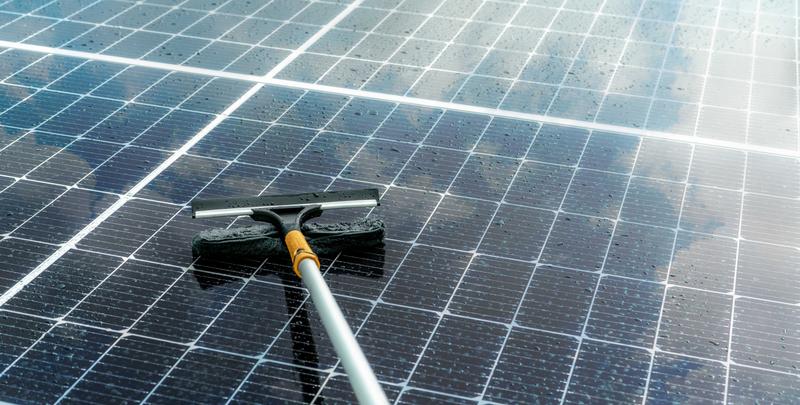
When you’re hunting for a high-efficiency
Why Solar Panel Cleaning Issues
Solar panels capture Electrical power at their most effective when clean up. Dust, pollen, hen droppings, and smog lessen effectiveness—from time to time by 20% or more. Frequent cleaning assists maintain exceptional general performance, prolong panel existence, and shield your investment.
Most important Positive aspects:
- Improved Electricity output
- Decrease electricity expenditures
- Extended panel lifespan
- Lessened threat of micro‑cracks because of thermal hotspots
Sorts of Solar Cleaning Tools
Picking out the proper Software is dependent upon your setup, h2o availability, and sought after convenience. Classes involve:
- Water‑driven photo voltaic brush systems
- Transportable photo voltaic panel cleansing package bundles
- Pure h2o cleaning techniques
- Rotary photo voltaic brushes and extension poles
H2o Run Photo voltaic Brush Methods
These brushes connect with a drinking water resource and spin while dispensing water, combining cleaning and lubrication in one phase. The end result: spotless panels with no scratching.
Vital Capabilities:
- Integrated drinking water feed through the brush head
- Comfortable bristles safe for glass surfaces
- Rotary motion decreases guide hard work
- Mounts on extension poles for rooftop entry
Moveable Photo voltaic Panel Cleansing Kit
A whole
- Brush head (fixed or rotating)
- Extension pole (adjustable lengths as much as six m)
- Hose adapters or quick‑join fittings
- Pure‑h2o tank or filtration process
- Smooth microfiber towels or squeegees
- Non‑abrasive cleaning Remedy (if allowed)
Benefits of All-in-One Kits:
- Start cleansing with negligible set up
- Compact for storage or travel
- Compatible with household or business solar arrays
Pure H2o Photo voltaic Cleaning Systems
These units purify community drinking water—getting rid of minerals and Dust—so it gained’t leave scale or streaks. Pure h2o empowers Specialist-grade success without the need of chemical compounds.
How It Works:
- Pretreatment filtration (sediment, carbon, ion Trade)
- Last deionization or reverse‑osmosis phase
- Filtered drinking water circulated through brush for cleansing
- Residue‑totally free drying—no places or streaks left at the rear of
Rotary Solar Brush & Extension Poles
For giant solar arrays or business use, a power-rotating head over a telescoping extension pole tends to make cleansing efficient and Safe and sound.
Benefits:
- Less Bodily energy, more quickly coverage
- Reach roofs and ground‑mounted panels very easily
- Adjustable shaft lengths for various angles
- Universal brief‑link strategies for components
Center on Protection & Ideal Techniques
Cleansing photo voltaic panels consists of heights and slippery surfaces—basic safety very first:
- Use non‑conductive extension poles
- Prevent force washers which will crack glass
- Do the job early or late to stay away from glare and warmth
- Dress in grips and slip-resistant shoes
- Observe local h2o‑use procedures or limits
Stage‑by‑Phase Cleansing Program
- Turn from the solar inverter or be certain technique is deactivated
- Rinse panels with small‑pressure drinking water
- Utilize a brush (or solar brush kit) with water feed
- Scrub Carefully in overlapping, linear passes
- Rinse totally with clean up water
- Dry with microfiber squeegee or comfortable towel—provided that required
Picking out the Suitable Photo voltaic Panel Cleansing Instrument
Take into consideration your setup along with your drinking water entry:
Maintenance & Care Recommendations
- Flush hose and brush after Just about every use
- Retail store dry, thoroughly clean, and faraway from UV exposure
- Swap worn brush heads—and Look at bristle softness
- Inspect seals and connectors for leaks
- Change or thoroughly clean filters in pure‑water programs routinely
Eco-Helpful Cleaning Added benefits
Accurate cleaning prolongs solar panel performance and decreases Vitality squander. Making use of h2o by yourself—without soaps or chemical compounds—helps protect area ecology and avoids runoff pollution.
How Solar Panel Cleansing Impacts ROI
Smart upkeep applying top quality brushes and kits keeps procedure performance topped up, decreasing the payback time period and maximizing Electricity produce after some time.
Cost Considerations & Benefit
- H2o‑run photo voltaic brushes are Charge-productive and durable
- Pure drinking water techniques have to have upfront investment but provide regular, place‑absolutely free cleaning
- Rotary brush kits Increase productivity—worthwhile for big installations
- DIY kits save labor expenditures; Expert products and services Value a lot more but free up your time and efforts
Typical Works by using of Solar Panel Brushes
- Residential rooftops
- Business solar farms
- RV or mobile installations
- Photo voltaic carports
- BIPV segments (building‑integrated photovoltaics)
Buyer Testimonies & Use Circumstances
solar cleaning brush“This solar panel cleaning brush produced a recognizable variation within minutes—dust absent, no streaks, and our output enhanced!”
“Upgrading into a h2o‑powered photo voltaic brush saved hours of scrubbing. Combined with a pure h2o method, the panels seemed new.”
FAQs About Solar Panel Cleansing
How frequently ought to panels be cleaned?
Each individual 6 to 12 months, based upon your local weather—additional often in dusty or pollen-weighty locations.
Can rain clean solar panels?
Rain will help but doesn’t reduce dirt buildup or film layers—guide cleansing yields improved overall performance.
Can I use faucet drinking water?
Faucet h2o may perhaps leave mineral residue. A
Can cleansing damage panels?
Only if abrasive tools or large-strain washers are utilised. Generally use smooth bristles, small-tension, and follow manufacturer guidelines.
Professional Tips for Photo voltaic Panel Entrepreneurs
- Cleanse early early morning or evening to prevent thermal tension
- Keep track of output information—if overall performance drops, clean panels
- Keep panels angled—standing h2o promotes algae development if remaining far too very long
- Rotate brush heads periodically to keep up even put on
Summary: A Brush For each Want
No matter whether you’re looking for a cost-productive
Investigate the entire line of brushes and accessories made especially for photo voltaic cleansing at